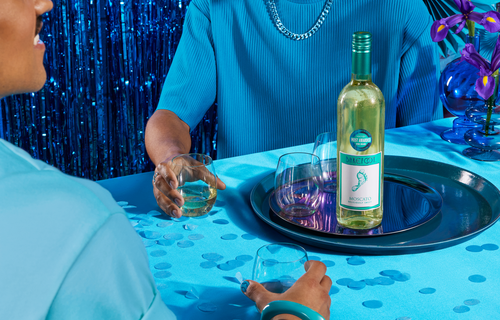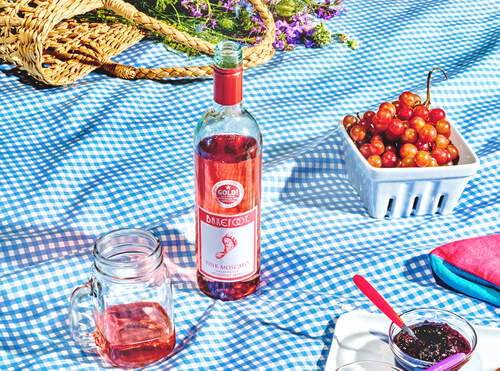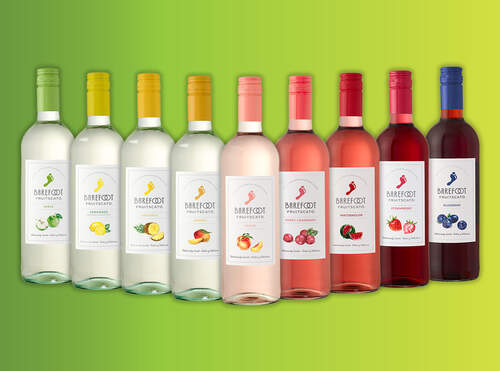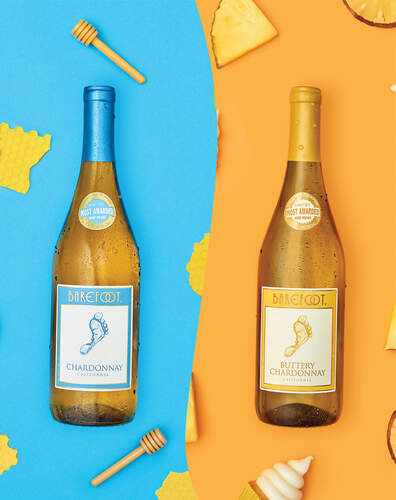What is Moscato Wine?
It’s dinnertime and you’re in the mood for something sweet and fruity. Which wine should you grab? A Barefoot Moscato, of course!
Moscato is a sweet white or pink wine with a low alcohol content that pairs exquisitely with desserts and spicy food. Moscatos are made from the Muscat grape—a table grape also used for raisins—and typically feature flavors of sweet peach, orange blossom and nectarine.
BEST MOSCATO FOOD PAIRINGS
When it comes to pairing Moscato with foods, you need to remember that its flavors are sweet with hints of orange blossom, peach, and other fruit flavors. Moscato pairs extremely well with creamy desserts and fruit tarts as well as caramel, butterscotch, vanilla, and coconut flavors. Don’t pair it with chocolate, though—its flavors may prove too rich to pair well.
For full-on meals, look no further than spicy, aromatic food. Pink Moscato has a sweetness that helps to cut through the spice and cool the heat. You can also pair Moscato with lighter meats like chicken and fish.
BEST MOSCATO CHEESE PAIRINGS
If you’re looking for the best possible Moscato and cheese pairing, go with creamier cheeses. Be sure to avoid sharp flavors as they may overpower the Moscato.
Because Moscato tends to be on the sweet side with hints of peach, apricot, and nectarine, it pairs well with brie, gorgonzola, and soft goat cheese.

WHAT IS THE BEST MOSCATO WINE?
There are 3 major Moscato wine types: Sparkling Moscato d’Asti, still Moscato, and dessert Moscato. The “best” Moscato depends on the foods you pair with it and when you’re enjoying it.
Sparkling Moscato
Sparkling Moscato is made from Muscat Blanc grapes. This style is mainly found in the province of Asti, Italy, so naturally it’s called Moscato d’Asti. This sweet frizzante bubbly wine has high aromatics and light alcohol level (close to 5-6% ABV).
Still Moscato
A still Moscato is made from Muscat Blanc or Moscatel grapes. Its alcohol content is much higher than most Moscatos (close to 12% ABV).
Dessert Moscato
These wines are typically made with Moscatel grapes (aka Muscat of Alexandria) or Orange Muscat. These grapes tend to have a thick oily texture and a tawny color. Dessert Moscato wines are most commonly sourced from the South of France, Southern Spain, Australia, and the U.S. Oak aging is common with these wines.
WHAT DOES MOSCATO WINE SMELL LIKE?
There’s nothing quite like smelling sweet Moscato for the first time. Moscato offers one of the most unique scents available in modern wines, which is colloquially known as “Muscat Aroma.”
At the top, the floral aromatics in Muscat-based wines feature a calming smell found in mint, lavender, citrus flowers, and cinnamon. At the base, Muscat Aroma also includes orange blossom, honeysuckle, almonds, ginger, green grapes, citrus tones, and ripe peach.

ORIGIN OF MOSCATO WINE
Moscato d'Asti hails from Italy's Northwest region of Piedmont, an area that also birthed the famous Barolo wine.
Our Moscato is made in California by none other than the award-winning Jennifer Wall. Her wines carry the honor of being the most-awarded still and sparkling wines in U.S. competitions. All said, the wines have received more than 2,000 medals, countless accolades, and – best of all – the support of fans around the world.
HOW IS MOSCATO WINE MADE?
Like other winemakers, Jen makes 3 Moscato wines from the must (pulp) of red or black grapes. Together with the grape skins, wine is created during the fermentation process.
Red Moscato gets its light red color and slightly deeper, richer flavor from limited contact with red grape skins. White Moscato is made without red grape skin contact, resulting in a lighter color and refreshing flavor.
The sugar converts to alcohol and carbon dioxide during this process, typically leaving dry wine. To keep it sweet, Jen combines cool temperatures, modern technology, and a careful process to ensure that some sugars remain for the semi-sweet Moscato. Voila!

WHAT KIND OF WINE IS SIMILAR TO MOSCATO?
There are not many comparisons to Moscato wines besides other Moscatos, but Gewürztraminer, semi-sweet versions of Prosecco, and sparkling versions of a semi-sweet Riesling are suitable options.


